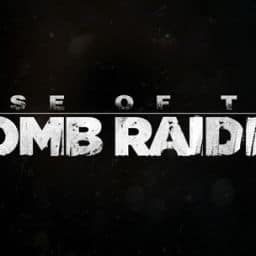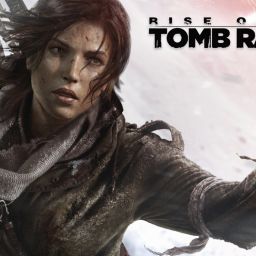The first episode in Anita Sarkeesian’s Tropes vs. Women in Video Games’ second season (2016) is all about the derrieres of female characters in games. This is not a case where the episode intended to focus on something else—third person games, for instance, which end up following around the badonk of the player-character—which accidentally ended up being all about backside, but intentionally. As in, someone (presumably Sarkeesian) decided that an episode needed to be made about booty.
Admittedly, the series is now offering up much shorter episodes (this one is six minutes and thirty-seven seconds, unlike the first season’s episodes, which generally ran around twenty to thirty minutes), so it makes sense that they would choose smaller topics or ideas. It will also allow the series to touch on more things, while also cutting down on production time. I think that’s probably a great direction for the series to take. Logistically, that part makes perfect sense.
Thematically, I am not on board.
First of all, by focusing a whole episode on the junk in various characters’ digital trunks, Sarkeesian is all but catering to the trollish perspective that feminists are just angry about the fact that they themselves do not possess attractive buns. Second, it’s quite frankly beating a very dead horse. No one is arguing that depictions of female characters in games—especially older games, such as the 1996 Tomb Raider, which is the first game the episode brings up—aren’t often depicted in a sexualized way, sometimes even to the level of the ridiculous. Third, it diminishes the integrity of the series because it causes people who were trying to take it seriously to dismiss it or to make ridiculous jokes.
But putting that behind us…
Sarkeesian’s series continues to suffer from a problem of historical context, made particularly evident by her continual use of old school games as examples. While the original Tomb Raider is a logical choice for any discussion of the sexualized depiction of female characters in gaming, it’s starting to get a little old. Lara Croft’s physical proportions are ludicrous and inhuman, even if their pixelated dimensions were once titillating. Everyone with eyes can see that. Even more importantly, there’s a new Lara Croft whose distribution of assets is more in line with what human women actually possess, and she wears mostly weather- and activity-appropriate clothing, unlike her earlier incarnation.
The propensity which Sarkeesian has for going back to earlier titles has the same problem literary and film critics have when discussing earlier eras; we can’t apply today’s standards to earlier works without falling victim to the fallacy of anachronism. We can’t say that Shakespeare was (or was not) a feminist, because feminists didn’t exist in the sixteenth and early seventeenth centuries. We can’t say that Twain was racist for using “n****r” in Huckleberry Finn because the whole society in which he was operating was racist, and Twain himself at least had the wherewithal to make Jim a fully-functioning human being. We can say that both writers had certain thoughts or impressions about women or people of color, but we have to put those in context if we are going to be responsible critics of their work. Is Twain’s depiction of Jim racist? Of course it is! But in context it is less racist than much of what his contemporaries were churning out, so he gets some bonus points for that.
Similarly, Toby Guard’s design for Lara Croft (although he wasn’t actually responsible for the proportions of either breasts or rump) was radical for the 1990s, as everyone thought that a female protagonist would functionally kill the series before it even got started. (Obviously, it didn’t, and Tomb Raider is one of the most globally successful franchises in gaming… especially since it crossed over into graphic novels, film, and toys far earlier and more successfully than any other game franchise.) She is also an example of the horrific sexism that was part and parcel of the games industry in the 1990s, as no self-respecting diver would ever wear a wetsuit that failed utterly to cover her caboose (to say nothing about the questionable decision to strap skinning knives to one’s bare legs). But in order to understand her, we have to put her in context, and that’s not something Sarkeesian really ever does.
Aside from that, Sarkeesian lambasts the entire third-person perspective as being about female characters’ keisters… despite the rather obvious fact that the third-person genre can’t help but feature fannies (and not in the UK usage), irrespective of their gender, species, or level of attractiveness. Certainly, some of the shots included in the film of hinies were rather excessive, primarily in cut scenes where said hindquarters did not need to be featured quite so prominently (taking up 50-75% of the visual area of the screen). The problem here is not that the cheeks themselves are always in view as it is that the costumes being worn most often are either extremely clingy or aren’t actually covering the rears in question (which is an issue with costuming that applies equally to a character’s cleavage).
Her joke about “the strategic butt covering” for Batman in Arkham City is something I had noticed myself while playing: Catwoman’s very shapely seat is prominently featured, while Batman’s is very difficult to catch a glimpse of, thanks to his cape. For that, Arkham City does deserve a bit of a call-out (and I haven’t even mentioned Catwoman’s zippered top), and I agree with Sarkeesian’s point that the clothing of protagonists could leave us with a bit less to be desired.
Sarkeesian does point out that many games with male player-characters feature different camera angles which don’t show them from the waist down or are closer in, hovering just above their shoulders. Gears of War is one of those which appears in the episode—and in Gears 3 is equally true of the female and the male characters (which she doesn’t mention). It is also true that there are many games which allow players to choose the gender (and often species) of their protagonist (Mass Effect, Skyrim, Dragon Age), as well as their clothing, which do allow them to scope out the tushies of both genders. Sarkeesian says that most male arse is “lacking in definition” due to clothing or armor, but, again, this is more about costume choices than it is exclusively about whether or not baby got back.
The marketing issue of the ludicrous displaying of female gluteus maximus on posters and box covers is another problem, and it is one over which designers have very little control. Often, these artistic renderings are not connected to the work of the actual developers, and it’s well worth stating that there is a lot of work that needs to be done in the marketing departments of most media vis a vis sexist depictions of women.
Ultimately, though, I came away from this episode being profoundly disappointed in the shallowness of its treatment of games, and in its functional dismissal of what it means to be a feminist critic. Sarkeesian’s decision to reduce the series to pointing fingers at digital posteriors is a complete turn-around from where I thought she was headed at the tail end of the last episode, instead offering up the most one-dimensional and content-less reading of gaming visuals in the series to date. It was a real bummer.





You are right as always (and you must have worn out your thesaurus). I just cleaned out my apartment and found a bunch of old Playstation posters, the ones that were inserted in the PS magazines back in the mid 90s. Most of them featured female protagonists, all clad in tight clothes, no in-game footage (which is understandable), but none of them were even doing in-game stuff. It was almost like a soft-core Playboy for virtual characters. Nina from Tekken just hanging around in a swimsuit, Lara reclining on a sofa etc. The posters even looked like they were made by a third party, like they hired some heavy metal album designer to airbrush some pretty game lady fanart.
(I haven’t read Twain since I was a child, so I might be incredibly wrong here, but wasn’t he an outspoken abolitionist? I vaguely remember something about Huck helping Jim escape even though he has been taught it is morally wrong.
Twain gave Huck some internal monologue along the lines of “If I don’t turn Jim in, I’m sure to go to hell. But I’ll rather go to hell than betray my friend.” So I’d say that even without the historical context, Twain comes out on top as an anti-racist. But yes, historical context IS important and is often ignored today. I almost think people don’t understand the concept.)
The problem with Sarkeesian’s thought process is that she seems to start with a conclusion, and then she works backwards to find evidence that supports this. Remember how she, in Dishonored, crawled under a table and zoomed in on prostitute posteriors? There is no need to do that, no achievement, no reward, no nothing. She did that of her own volition, and then she expects us to be angry at the game designers. She reminds me of those southern Baptist anti-gay crusaders (who are invariably closeted themselves) who see The Homosexual Agenda everywhere. Sure, if you spend all day at a glory hole in a sauna, you may find evidence of excessive gayness. So don’t do that.
Her argument that Lara’s butt is in the center of the frame is ridiculous. We have to see her feet and the ground ahead of her. This isn’t a sexist conspiracy, it’s the entire point of the game. And it isn’t hard to find the exact same camera angle with a male arse in center frame. Just look at “Duke Nukem: Time To Kill”, which is also a PS1 game with very similar game engine, mechanics and gameplay. You HAVE to see the feet of your avatar if you are climbing ladders and back-flipping through lava caves. Either Sarkeesian knows this and is intentionally lying to bolster her flimsy point, or she really doesn’t understand how games work.
I really don’t understand what she’s doing. Why does she want to see Batman’s ass? She’s coming off more as a drunken spinster at a Chippendales show than a feminist.
Male ass does not equal female ass any more than naked male chest equals a naked female chest. I would argue that a hyper-masculine male is defined by broad shoulders and square jaw rather than shapely buttocks. And the body armor, tabards and capes she detest emphasize shoulder size and thus masculinity.
A hyper-feminine female would by the same token be defined by the hourglass shape, with the proportions varying according to fashion. Her ass=ass argument is as asinine as asking “Hey, Tarzan is bare-chested, so why isn’t Jane? It’s totally the same thing! This is misandry!”
If there is a problem here, it isn’t that we can’t see Batman’s ass. It’s that BOTH male and female characters are exaggerated versions of their sexes, often to the detriment of real characterization.
A lot of the female baddies in Batman are hypersexual, and have always been. I don’t know if this is a legacy from the time when some moral crusader accused Batman of being a Homosexual, and DC went into overdrive to insert female sultriness on every page to counteract the multi-generational sausage fest in (and under) Wayne Manor. “Now look here, see, even the crime dames are fighting over him, he couldn’t possibly be a Homosexualist!” Superman, who is also a DC character in the same universe, never had anything like this. All female characters around him are very prim and proper.
This, of course, doesn’t mean that they still have to be all spandex-clad seductresses. And after Eartha Kitt’s passing, DC should just retire Catwoman.
And thanks–as always–for reading!
Women like to look at male butts, too. It may be that the male buttocks are not hallmarks of masculinity (your point is a good one), but I think part her remark is that if men like to ogle women’s behinds, women like to ogle men’s behinds, too. Equal opportunity ogling and all that. Certainly that doesn’t solve the problem… what problem actually exists–which I would argue is the costuming, which is typically more sexualized on female characters although it can also be sexualized or ridiculous for other reasons on male ones, too.
Heroes are going to be hyper versions of idealized people–male and female. But that doesn’t mean that metal bikinis are as equally practical as male armor–Catwoman’s outfit isn’t as practical as Batman’s (believe me, nobody likes cleavage drafts)–or that there isn’t more of a problem with female representation than male (because there is). There are better ways to do both, but women are still behind in this race, so it’s fine to talk more about them.
All that said, this video didn’t actually do a good job of making its points.
[…] on Monday my response to the latest Tropes vs. Women in Video Games episode (season 2, episode 1) went up on T…. The episode–in a new style from the previous season of the series–is all about butts, […]
Regarding the game “Wet” that was briefly shown, its developers actually got angry at a German journalist asking about whether “is there a swinsuit outfit in the game”? (The cover of the game is pretty atrocious and completely misleading of her character) Having played through the game it is more in the Beyond Good & Evil category (conversely, Alice: Madness Returns which got mentioned as a positive example has a creepy preference for making her skirt float).
“”Sarkeesian does point out that many games with male player-characters feature different camera angles which don’t show them from the waist down or are closer in, hovering just above their shoulders.””
This is probably one of my least favorite things that Sarkeesian does, she has a point, but then either undermines it with her examples or chooses to compare apples to oranges. It simply seems glaringly obvious that she should do the comparisons with games with similar gameplay (e.g. contrasting the climbing-orientated Tomb Raider with Uncharted, where Nathan Drake’s butt is also prime screen real estate* or Crackdown or Prototype). She was essentially comparing female fighting game character against men in third person shooters (you already mentioned Gears of War, but the same holds for other games like FUSE, Resident Evil 5, Resident Evil Revelations 2, Mercenaries 2 and so forth, basically if you can choose between a female and male character the camera angle will be the same)
*I also vehemently disagree with her on the focus when regarding the case of Nathan Drake’s butt. Or then I just like staring at Nathan Drake’s butt.
The topic of the video is again one of those areas where she is clearly right, there is no need to choose poor examples or resort to trickery here.
Also while it isn’t a big thing the shot she uses for Binary Domain is very inaccurate, you clearly see the dudes butt in regular gameplay (additionally it is a pretty nice butt). Ditto goes for the clip from Alan Wake, the regular gameplay angle includes his butt (he should really have been in the coated butt section, not the camera angle section). The clip from Kane and Lynch 2 is also very distorted from regular gameplay, but it is otherwise a good choice as the regular camera angle cuts of from his waist.
All in all I don’t think that there are that many games where the camera is located that high up (I assume that Sarkeesian understands the difference between aim in-mode camera and the regular camera in a third person shooter), Resident Evil 4 has it pretty high up, same with Army of Two: The Devil’s Cartel and Dark Sector, but waist level is the highest that I saw in a pretty large sample, the standard seemed to cut off at the thigh and the higher exceptions were outnumbered around 10 to 1. I didn’t see a single game where the default camera height is at the shoulders.
Sleeping Dogs allows you to customize your own clothing including some more tight choices or then Wei Shen just runs around in his underwear.
While I can’t believe that she managed to use Dante’s Inferno wrong in a video*, the usage of said game for that point is a bad choice, it is one of the few games where the male protagonist is stripped naked and you see his actual butt (the only other game I can think of is Raiden’s nude segment in Metal Gear Solid 2).
*Because ugh that game.
Also Heavenly Sword (a 2007 game rather than 2014 one as stated in the video) is a perfect example of what she is talking about, couldn’t they at least have included an alternate costume or something? A lot of the other games used (Lollipop Chainsaw, Bayonetta, X-Blades, Golden Axe) weren’t really narrative based, but Heavenly Sword was definitely going for it, but the [whatever that combo is called] is only distracting at best and monumentally stupid and embarrassing at worst.
It was also a bit curious that she didn’t mention the enormous divide between Japan and the West. In general dudes in Japanese games have way tighter and sculpted butts than those in the West (it wasn’t a coincidence that both her examples of sexualized dude butts were from Japanese games, MGS tends to have it in every game)
Last butt not least I have to admit not notcing the abundances of male ass covering (e.g. aside from her examples Viking: Battle for Asgard has some weird ass cape thing),